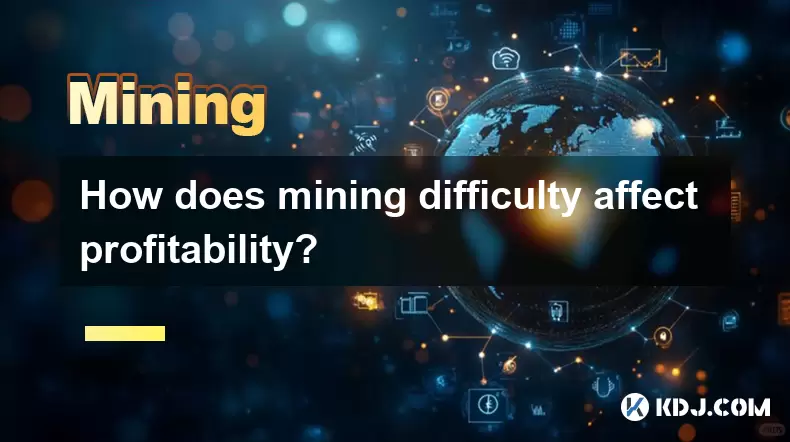-
 Bitcoin
Bitcoin $117,991.5647
-0.03% -
 Ethereum
Ethereum $2,966.4808
0.18% -
 XRP
XRP $2.8076
0.64% -
 Tether USDt
Tether USDt $1.0003
0.00% -
 BNB
BNB $689.9050
-0.63% -
 Solana
Solana $162.0407
-0.80% -
 USDC
USDC $0.9999
0.00% -
 Dogecoin
Dogecoin $0.1995
-1.51% -
 TRON
TRON $0.3001
-1.21% -
 Cardano
Cardano $0.7426
3.25% -
 Hyperliquid
Hyperliquid $47.7978
2.84% -
 Stellar
Stellar $0.4411
16.52% -
 Sui
Sui $3.4267
0.15% -
 Chainlink
Chainlink $15.3148
0.07% -
 Bitcoin Cash
Bitcoin Cash $506.5880
-1.91% -
 Hedera
Hedera $0.2222
12.41% -
 Avalanche
Avalanche $21.2049
1.67% -
 UNUS SED LEO
UNUS SED LEO $9.0606
-0.19% -
 Shiba Inu
Shiba Inu $0.0...01325
-0.86% -
 Toncoin
Toncoin $2.9979
0.32% -
 Litecoin
Litecoin $94.3717
1.13% -
 Polkadot
Polkadot $3.9873
-0.29% -
 Monero
Monero $336.1497
0.92% -
 Dai
Dai $0.9999
-0.01% -
 Uniswap
Uniswap $8.5189
-0.60% -
 Ethena USDe
Ethena USDe $1.0005
-0.04% -
 Pepe
Pepe $0.0...01236
-0.92% -
 Bitget Token
Bitget Token $4.4002
-0.23% -
 Aave
Aave $303.5433
1.05% -
 Bittensor
Bittensor $391.1314
-0.35%
How does mining difficulty affect profitability?
Bitcoin's mining difficulty adjusts every 2016 blocks to maintain stable block times, rising with more miners and falling when they leave, directly impacting profitability and network security.
Jul 13, 2025 at 05:07 am

Understanding Mining Difficulty in Cryptocurrency
Mining difficulty is a metric used in blockchain networks to measure how hard it is to find a valid block. It adjusts periodically to ensure that the time between blocks remains relatively constant, regardless of how much hashing power is applied to the network. In Bitcoin’s case, mining difficulty adjusts every 2016 blocks, or roughly every two weeks. When more miners join the network, the difficulty increases, making it harder to mine new blocks. Conversely, if miners leave the network, the difficulty decreases.
The primary purpose of adjusting mining difficulty is to maintain the stability and security of the blockchain. For example, Bitcoin targets an average of one block every ten minutes. If blocks are mined faster than this due to increased hashing power, the difficulty will rise to slow down the process. This dynamic adjustment ensures predictability in block times and prevents inflationary surges in coin supply.
Direct Relationship Between Mining Difficulty and Hashrate
Hashrate refers to the total computational power being used to mine and process transactions on a blockchain. As hashrate increases, mining difficulty also increases. This is because more computing power means blocks can be mined faster than intended, prompting the protocol to adjust the difficulty upwards.
For instance, during periods of high cryptocurrency prices, more miners are incentivized to join the network. The result is a spike in hashrate, which leads to a subsequent increase in mining difficulty. Higher difficulty means each miner contributes a smaller share of the total hashrate, reducing their chances of successfully mining a block unless they upgrade their hardware or pool resources with others.
Conversely, when the price of a cryptocurrency drops, some miners may shut down operations due to unprofitability. This causes a decline in hashrate, leading to a decrease in mining difficulty during the next adjustment period. Lower difficulty makes it easier for remaining miners to find blocks, potentially improving short-term profitability.
Impact of Mining Difficulty on Block Rewards and Revenue
Block rewards are the primary source of income for miners. These rewards consist of newly minted coins plus transaction fees from the block. However, as mining difficulty increases, the likelihood of finding a block decreases for individual miners. This directly affects revenue, especially for small-scale miners using outdated equipment.
Let’s take an example: suppose a miner operates a device with a hashrate of 100 TH/s on the Bitcoin network. If the mining difficulty doubles, the same device would statistically find half as many blocks over the same time period. Unless the price of Bitcoin rises or electricity costs drop significantly, this reduction in block discovery negatively impacts profitability.
Additionally, block rewards undergo halving events approximately every four years. With fewer coins awarded per block, miners must rely more heavily on transaction fees to remain profitable. As difficulty increases post-halving, miners without efficient setups may struggle to cover operational costs.
Operational Costs and Profitability Under Changing Difficulty Levels
Electricity costs are the most significant ongoing expense for miners. Mining difficulty plays a crucial role in determining whether a mining operation is sustainable. Higher difficulty requires more computational work, increasing energy consumption. If the cost of electricity exceeds the value of the mined coins, the operation becomes unprofitable.
Here's a breakdown of how to calculate profitability under changing difficulty:
- Determine your mining hardware's hashrate (e.g., 100 TH/s).
- Calculate the current network hashrate and mining difficulty.
- Estimate your probability of finding a block within a given time frame.
- Factor in block reward and average transaction fees.
- Subtract electricity costs and maintenance expenses.
Using tools like mining profitability calculators can help estimate returns. Websites such as WhatToMine or NiceHash Calculator allow users to input real-time data, including power consumption and local electricity rates, to project earnings under different difficulty scenarios.
Miners should also consider the efficiency of their hardware. Older models consume more electricity per hash and become less viable as difficulty rises. Upgrading to newer Application-Specific Integrated Circuit (ASIC) miners can offset rising difficulty by offering better performance per watt.
Strategies to Mitigate the Impact of Rising Mining Difficulty
Miners can adopt several strategies to cope with increasing mining difficulty without sacrificing profitability:
Join mining pools: By pooling resources with other miners, individuals can combine their hashrate to increase the frequency of block discoveries. While rewards are shared, pool mining offers more consistent payouts compared to solo mining.
Optimize energy usage: Miners located in regions with cheap electricity have a competitive advantage. Some relocate their operations to areas with abundant hydroelectric or geothermal power where electricity costs are significantly lower.
Upgrade mining hardware: Investing in more efficient ASICs improves the ratio of computational output to power consumption. Modern miners offer higher hashrates while consuming less electricity, helping offset rising difficulty.
Monitor difficulty trends: Using historical data and predictive analytics, miners can anticipate upcoming difficulty adjustments. This allows for proactive decisions, such as temporarily shutting down unprofitable rigs or scaling up before difficulty increases.
Diversify mining efforts: Some miners switch between cryptocurrencies based on profitability metrics. When Bitcoin difficulty rises sharply, mining altcoins with lower difficulty levels might yield better returns.
Frequently Asked Questions
Q: Can mining difficulty ever decrease?
Yes, mining difficulty can decrease. If the network hashrate drops significantly—such as during a market downturn—the protocol automatically lowers the difficulty to maintain consistent block times.
Q: How often does Ethereum adjust its mining difficulty?
Ethereum adjusts its mining difficulty dynamically with each block. Unlike Bitcoin, which uses fixed intervals, Ethereum employs an algorithm that modifies difficulty based on the time taken to mine the previous block.
Q: Does mining difficulty affect GPU miners differently than ASIC miners?
Yes, mining difficulty affects all miners, but the impact varies depending on hardware efficiency. ASIC miners generally handle higher difficulty better due to superior hashrate and energy efficiency compared to GPUs.
Q: Is there a way to predict future mining difficulty changes?
While exact predictions are difficult, mining difficulty trends can be estimated by analyzing historical hashrate data and current network conditions. Tools like mining calculators provide projections based on existing metrics.
Disclaimer:info@kdj.com
The information provided is not trading advice. kdj.com does not assume any responsibility for any investments made based on the information provided in this article. Cryptocurrencies are highly volatile and it is highly recommended that you invest with caution after thorough research!
If you believe that the content used on this website infringes your copyright, please contact us immediately (info@kdj.com) and we will delete it promptly.
- Crypto, Gold, and Bitcoin: A New York Minute on the Digital Gold Rush
- 2025-07-13 20:30:16
- Crypto iGaming in India: JetTon, LunarBet, and the Evolving Landscape
- 2025-07-13 20:50:16
- XRP Price, Whales, and Payment Tokens: A New Era for Crypto?
- 2025-07-13 20:35:16
- Shiba Inu, Little Pepe, and the $1 Dream: A Meme Coin Showdown
- 2025-07-13 20:50:17
- Snorter Trading Bot: The Meme Coin Presale That's More Than Just Hype
- 2025-07-13 18:30:16
- Unlocking Blockchain Insights: A Deep Dive with Bitquery API for Data Query
- 2025-07-13 18:30:16
Related knowledge

How to keep a mining rig cool
Jul 12,2025 at 01:42pm
Understanding the Importance of Cooling in Mining RigsCryptocurrency mining is an intensive process that places heavy demand on hardware components, p...

How much does it cost to start crypto mining?
Jul 13,2025 at 12:22am
Understanding the Basic Costs of Crypto MiningStarting crypto mining involves several upfront and ongoing expenses. The primary costs include hardware...

What is the most profitable crypto to mine?
Jul 13,2025 at 07:00am
Understanding Mining Profitability in CryptocurrencyWhen evaluating the most profitable crypto to mine, it's essential to consider several factors tha...

What do I need to start mining crypto?
Jul 13,2025 at 12:28am
Understanding the Basics of Crypto MiningCrypto mining is the process by which transactions are verified and added to a blockchain, and new coins are ...

How does crypto mining work?
Jul 13,2025 at 11:01am
Understanding the Basics of Crypto MiningCrypto mining is the process through which new cryptocurrency coins are introduced into circulation and trans...

How to find the best Dogecoin mining pool for me
Jul 12,2025 at 04:14pm
Understanding the Role of a Mining PoolWhen mining Dogecoin, joining a mining pool can significantly increase your chances of earning consistent rewar...

How to keep a mining rig cool
Jul 12,2025 at 01:42pm
Understanding the Importance of Cooling in Mining RigsCryptocurrency mining is an intensive process that places heavy demand on hardware components, p...

How much does it cost to start crypto mining?
Jul 13,2025 at 12:22am
Understanding the Basic Costs of Crypto MiningStarting crypto mining involves several upfront and ongoing expenses. The primary costs include hardware...

What is the most profitable crypto to mine?
Jul 13,2025 at 07:00am
Understanding Mining Profitability in CryptocurrencyWhen evaluating the most profitable crypto to mine, it's essential to consider several factors tha...

What do I need to start mining crypto?
Jul 13,2025 at 12:28am
Understanding the Basics of Crypto MiningCrypto mining is the process by which transactions are verified and added to a blockchain, and new coins are ...

How does crypto mining work?
Jul 13,2025 at 11:01am
Understanding the Basics of Crypto MiningCrypto mining is the process through which new cryptocurrency coins are introduced into circulation and trans...

How to find the best Dogecoin mining pool for me
Jul 12,2025 at 04:14pm
Understanding the Role of a Mining PoolWhen mining Dogecoin, joining a mining pool can significantly increase your chances of earning consistent rewar...
See all articles

























































































